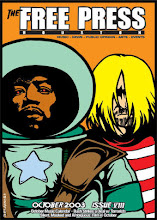Max Payne

Max Payne is just mind numbingly bad. Sitting through the credits, a scene after the credit roll teases us with Payne (Mark Wahlberg) and Mila Kunis (Mona Sax) sipping beers and plotting revenge on the corporate head of Aesir Pharmaceuticals as if the preceding film deserved much less earned sequel rights.
Max Payne is based on a video game and lives and breathes in a cosmology of its own. One cannot deny the coolness of the Norse mythology that underlines the plot that detective Payne stumbles upon while searching for the long ago killers of his wife and child. The bad pharmaceutical company was testing a potion that turned soldiers into invincible killing machines although their symptoms resemble doped-up race horses. The drug enables the user to see, feel and hear Norse gods who take you to heaven only if you die through violence. If you die in your sleep you go to hell, or something like that.
Sax hooks up with Payne after her sister Natasha is killed, with Payne's wallet found next to her remains. Olga Kurylenko plays Natasha and this marks two films where she dies in upcoming weeks. It's already been reported how her character in Quantum of Solace, Camille, is dispatched in a manner similar to the woman painted gold in Goldfinger.
There's some beautifully realized photography that plays with shadows in a unique way, plus the whole film takes place in falling snow. That's it for May Payne's good points. Some prime actors like Kate Burton, Chris O'Donnell, Donal Logue and Beau Bridges are wasted while a non-actor like Chris Ludacris Bridges play an internal affairs detective so badly conceived you don't even notice how poor his acting chops seem. There's a couple of sequences that use slo-mo bullet trajectory during an action sequence and they just blow. It looked like a video game version of something we might've seen nearly ten years earlier in The Matrix. Maybe that's what the filmmakers considered par for the course.











